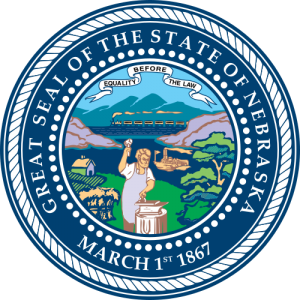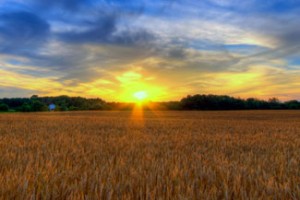 Nebraska Population 2013
Nebraska Population 2013
The United States Census Bureau estimates that the population of Nebraska in 2013 was 1,855,525, which is ranked the 37th largest population in the United States. This estimate shows a 1.6% increase since the last census in 2010, also conducted by the United States Census Bureau. The population density of the state is 24.0 people per square mile, ranked 43rd largest density in the United States. The population by the year 2020 should near close to 1.9 million based on the current population growth trends.
Nebraska Land Mass
The state of Nebraska is approximately 430 miles long and 210 miles wide with a square area of 77,358 square miles, making it the 16th largest state in the Untied States. Of the 77,358 square miles, only 481 square miles are covered by water. The highest point in the state of Nebraska is Panorama Point, which reaches 5,424 feet above sea level. The lowest point in the state is at the Missouri River in southeastern Richardson County, which reaches 840 feet above sea level. The geographic center of Nebraska is in Custer County, 10 miles northwest of Broken Bow. Nebraska is bordered by six states in total: South Dakota, Iowa, Missouri, Colorado, Wyoming, and Kansas.
Nebraska Demographics
Of the approximate 1.86 million people in the state of Nebraska, about 50.3% of the population is female, while 49.7% is male. Also, approximately 90% of the population identifies as white (including Hispanic or Latino). But, out of that 90%, about 10% do identify as Hispanic or Latino and the other 80% as Caucasian. Those that identify as Black or African American make up only 5% of the entire population of the state of Nebraska. The rest of the population is made up of those that identify as Asian, American Indian, Alaskan Native, Hawaiian, other Pacific Islanders, or those that identify as two or more races. These other races make up only about 5% of the Nebraska population.
Nebraska Religion
The population of Nebraska identifies as religious at a slightly higher rate than the national average. About 56% of the state population identifies as religious, compared to the national average of 49%. Out of the 56%, about 21% identify as members of the Catholic Church, making it the largest denomination in the state of Nebraska. The next largest denomination in the state is Lutheran. About 13% out of the 56% identifies as Lutheran. The next largest denomination in the state is Methodist with about 7% out of the total 56%. All other Christian denominations make up around 14% out of the total 56%. Judaism, Islam, and Eastern religions make up only about 1% out of the total 56%.
Visiti Nebraska
 Nebraska Economy
Nebraska Economy
The unemployment rate in the state of Nebraska is well below the rate of the national average. Nebraska has an unemployment rate of approximately 4.1% compared to the national average of 7.6%. The state currently has a recent job growth of about 2.7% and an expected job growth of 41.3%. The sales tax in the state of Nebraska is about 5.5% on average. The highest percentage of the population of Nebraska is in the household income bracket of earning between $50,000 and $75,000 every year. About 22% of the population of Nebraska is in this bracket. Only 10.6% of the population makes less than $15,000 per year and only about 0.1% makes more than $500,000 per year.
Food processing is the number one manufacturing activity in Nebraska. In fact, the state is one of the world’s largest meatpacking centers. The next largest manufacturing activities are the production of chemicals and machinery respectively. In fact, agriculture is the dominant occupational objective in the state of Nebraska. The main farm products are cattle, corn, hogs, soybeans, and wheat. Corn is especially a huge part of the agriculture in the state. Due to the drought across the Corn Belt, farm incomes are expected to drop and reach about $5 billion instead of $5.2 billion. Along with this, Nebraska is the state that gave rise to the holiday “Arbor Day” since it has been active in planting forests.
While the agriculture in Nebraska is quite important, the services sector makes up 38% of the state of Nebraska’s employment. This sector includes jobs such as professional and scientific job, along with the arts, recreation, and entertainment. This sector is expected to continue to grow and add about 8000 new jobs every year.


